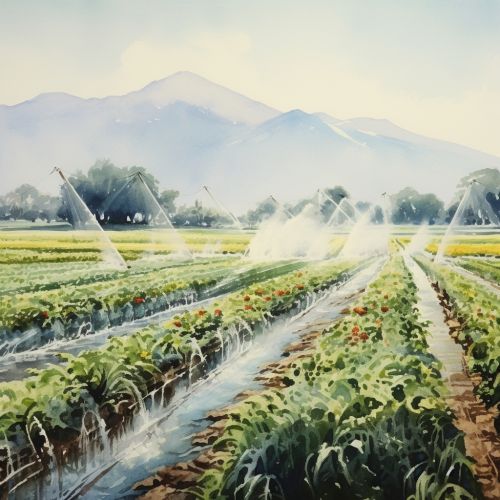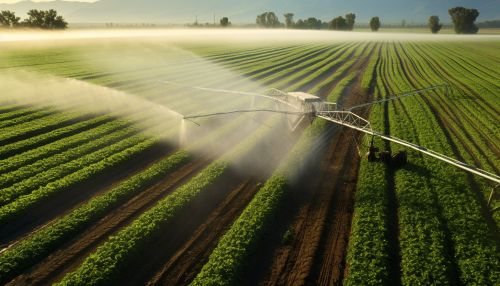Sub-irrigation
Introduction
Sub-irrigation, also known as seepage irrigation, is a method of irrigation where water is delivered directly to the root zone of plants. This method of irrigation is different from traditional surface irrigation techniques, which often result in water loss due to evaporation and runoff. Sub-irrigation systems are designed to minimize these losses, providing a more efficient and sustainable way to irrigate crops.


History
The concept of sub-irrigation is not new and has been practiced for centuries in various forms. Early civilizations in the Indus Valley and Egypt used primitive forms of sub-irrigation, where they would dig canals and ditches to direct water to their fields. The water would then seep into the ground, providing moisture to the root zone of the crops.
Types of Sub-Irrigation Systems
There are several types of sub-irrigation systems, each with its own unique set of advantages and disadvantages. These include:
Subsurface Drip Irrigation
Subsurface drip irrigation (SDI) is a type of sub-irrigation system where water is delivered directly to the root zone of plants through a network of buried tubes or drip lines. This method is highly efficient as it reduces water loss due to evaporation and runoff.
Seepage Irrigation
In seepage irrigation, water is applied to the field through a series of ditches or canals. The water then seeps into the ground, providing moisture to the root zone of the crops. This method is commonly used in areas with high water tables.
Sub-Irrigation in Greenhouses
Sub-irrigation is also commonly used in greenhouses. In this setting, water is often delivered to plants through a system of capillary mats or troughs. The water is then absorbed by the plants' root systems.
Advantages of Sub-Irrigation
Sub-irrigation offers several advantages over traditional surface irrigation methods. These include:
- Efficiency: Sub-irrigation systems are designed to deliver water directly to the root zone of plants. This reduces water loss due to evaporation and runoff, making sub-irrigation a more efficient method of irrigation.
- Sustainability: By reducing water loss, sub-irrigation systems can help to conserve water resources. This makes sub-irrigation a more sustainable method of irrigation, particularly in areas where water resources are scarce.
- Improved Crop Yield: Sub-irrigation can lead to improved crop yield as it provides a more consistent supply of water to the root zone of plants. This can result in healthier, more productive crops.
Disadvantages of Sub-Irrigation
Despite its advantages, sub-irrigation also has some disadvantages. These include:
- Cost: The initial cost of installing a sub-irrigation system can be high. This can make sub-irrigation a less attractive option for small-scale farmers or those with limited resources.
- Maintenance: Sub-irrigation systems require regular maintenance to ensure they are functioning properly. This can include checking and repairing leaks, cleaning filters, and monitoring soil moisture levels.
- Drainage Issues: In areas with poor drainage, sub-irrigation can lead to waterlogging, which can damage crops.
Conclusion
Sub-irrigation is a method of irrigation that offers several advantages over traditional surface irrigation methods. By delivering water directly to the root zone of plants, sub-irrigation systems can reduce water loss, conserve water resources, and improve crop yield. However, these systems can also be costly to install and maintain, and may not be suitable for all situations.
